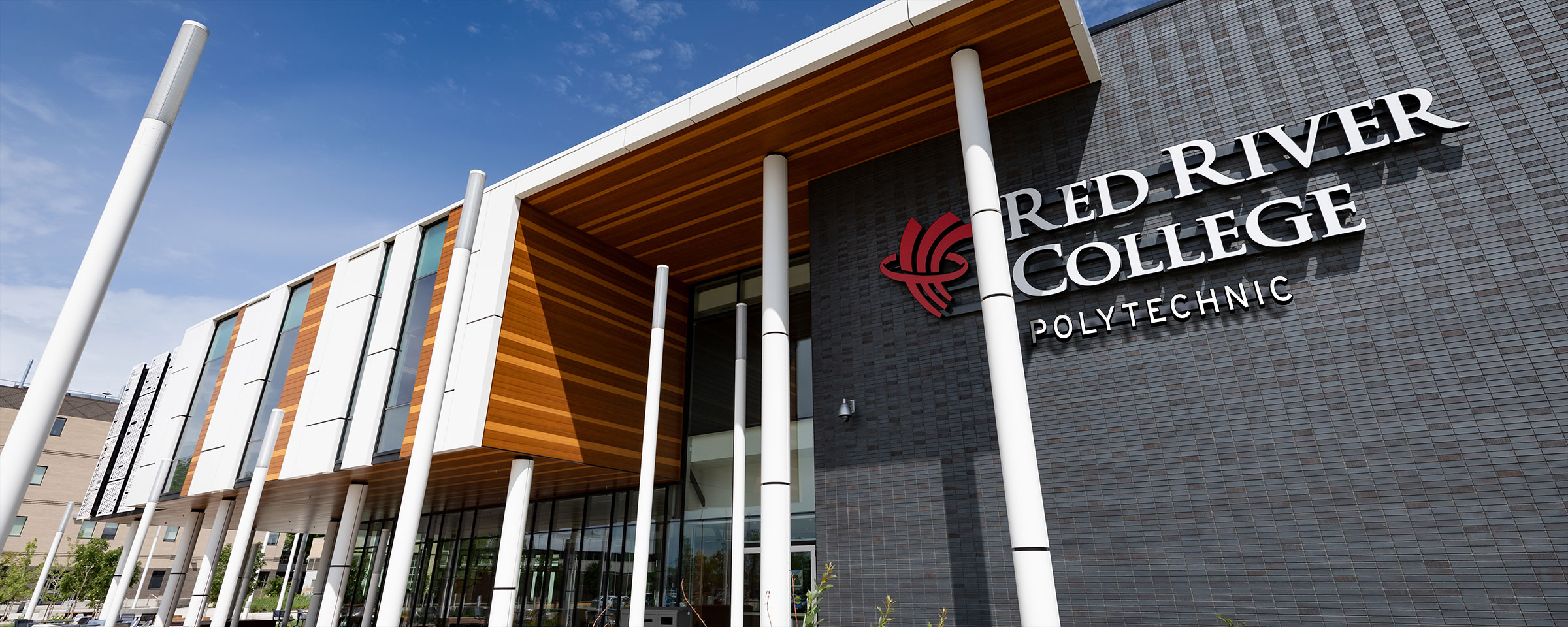Applied Computer Education chair a model of innovation at work
 You could say innovation is right up Haider Al-Saidi’s alley.
You could say innovation is right up Haider Al-Saidi’s alley.
As chair of the Applied Computer Education (ACE) department at Red River College, Al-Saidi oversees the Business Information Technology (BIT) and Business Technology Management (BTM) programs. Both BIT and BTM make frequent use of the College’s new ACE Project Space, an interactive work hub located at 321 McDermot Ave., in Winnipeg’s Innovation Alley.
At the ACE Project Space, education and entrepreneurship co-exist. Students from the BIT and BTM programs work alongside industry leaders and entrepreneurs-in-residence to turn their enterprising ideas into realities.
“Educational institutions should lead,” says Al-Saidi, who has chaired the ACE department since late 2012, and previously chaired RRC’s Electrical Engineering Technology program.
“The model that colleges used to go by was to ask industry, ‘What do you want to do?’ and then do what they asked of us. The problem is industry will look at their immediate need, because what drives them is money. My philosophy is the opposite. I think that educational institutions should lead industry, and should provide them with new ideas to move forward. We still provide the support for industry, but also, at the same time, provide industry with new information.”
Having originated in a small room in RRC’s former Massey Building complex in 2015, the ACE Project Space moved to its new Innovation Alley digs one year ago, in January 2017.
It’s not the only aspect of the ACE department marking an anniversary this year. The BTM and BIT programs are also celebrating milestones, with BTM first being offered in January 2016 and BIT dating back a full 50 years. (In its infancy, it was known as the Computer Analyst/Programmer program; later the Information Systems Technology program was added, then the two merged into Business Information Technology.)
As Al-Saidi — who’s a senior member of the Institute of Electrical and Electronic Engineers, and serves as chair of the Business Technology Management Accreditation Counsel — puts it, BIT is “an IT program with a flavour of business,” while BTM is “a business program with a flavour of IT.”
“The two programs complement each other,” he explains. “The idea is that BIT graduates will work on developing applications and software, and looking after networks, while the BTM students look after the projects that go with that. They are project managers and business analysts.”
Since taking over ACE, Al-Saidi has made a few forward-thinking changes to the department.
 “I created a new style of managing ourselves,” he says. “Instead of having one big meeting where we decide on every single thing, I divided the faculty into subgroups based on their skill sets. I just require that those subgroups meet twice a month and I then meet with the leaders of those groups. That way we’re able to do many things in short period of time.
“I created a new style of managing ourselves,” he says. “Instead of having one big meeting where we decide on every single thing, I divided the faculty into subgroups based on their skill sets. I just require that those subgroups meet twice a month and I then meet with the leaders of those groups. That way we’re able to do many things in short period of time.
“I also looked at how we can involve the students within the department. We helped the students create the Bits and Bytes Association. We support that association with their activities and I invite its members to the department’s advisory committee. It helps create interest from the students — to be involved with the department rather than being outside of it, just doing their homework and taking their courses.”
Al-Saidi, who started his career as a system level designer and developer of wireless systems, also puts a heavy emphasis on professional development, encouraging faculty members to update their skillsets by taking courses and attending conferences.
“We decided in the last few years to be involved in many conferences, and to be on organization committees or to host or sponsor,” says Al-Saidi, who over the course of his career has worked for organizations in New York, Los Angeles and Toronto. “That helped us to be recognized by other organizations, academics and people working in the IT industry.”
Al-Saidi has an ambitious agenda for the ACE department. One particularly advanced interest of his is the area of adaptive systems and machine learning, which in a nutshell involves conditioning computers to learn without being explicitly programmed. He is also looking to implement a competency-based learning approach in all ACE programs.
A regular presence on the guest lecturer circuit (who’s travelled to India, the UK and the Philippines in recent years), Al-Saidi sees RRC as the perfect place to practice such progressive ideas.
“With an educational institution, we don’t have a line of production. When we experiment, the cost of failure is very minimal, as opposed to an industry with a line of production,” he says.
“If we want to try new concepts, the best place to try it is at an educational institution. It will save companies money and effort, and it will provide companies with new ideas. And it will be students that come up with the new ideas — and trust me, students are really genius when it comes to new ideas and thinking outside the box.”
Profile by Jared Story (Creative Communications, 2005)
